Wilderness
"Wilderness areas are areas of undeveloped Federal land that retain their primeval character and influence, without permanent improvements or human habitation, which are protected and managed to preserve their natural conditions. These areas are established as part of the National Wilderness Preservation System.
Wilderness was created for the use and enjoyment of the American people. Yearly, over 12 million people visit wilderness to hike, ride horses, hunt, fish, ski, float, take pictures and stargaze, to name a few. Many people who visit wilderness are inspired and humbled by the feeling of being part of something larger than one's self. Wilderness is a haven for self-discovery and rejuvenation. Wilderness areas have a positive impact on local and regional economies. Counties with wilderness generally have higher income and employment growth rates. From sales to service, the economic benefits of wilderness influence every avenue of business that relies on this resource."
"Discovering America's Wilderness", at


National Forests and National Grasslands
"The National Forests and Grasslands provide the greatest diversity of outdoor recreation opportunities in the world, connecting you with nature in an unmatched variety of settings and activities. You hike, bike, ride horses and drive off-highway vehicles. You picnic, camp, hunt, fish, and navigate waterways. You view wildlife and scenery, and explore historic places. You glide though powder at world class alpine resorts and challenge yourselves on primitive cross-country ski or snowmobile routes.
This book brings to focus these forests and grasslands with a brief description of location, environment and scenery, rivers and lakes, and recreational activities found within. Each location displays icons representing hiking, biking, mountain biking, OHV and ATV trails, horse trails and camps, canoeing and boating, whitewater kayaking and rafting, skiing (both Nordic and downhill), ice skating, snowmobiling, hunting, swimming, as well as camping and RV camping and hookup locations. In addition, there are icons representing visitor centers, museums, and food and concessions."
"Discovering National Forests", at


State Parks
"State Parks exhibit one of more intrinsic qualities-- scenic, natural, historic, recreational, and archaeological -- contributing towards a unique travel and recreational experience. There are 0ver 3,200 State Parks in the 50 states and Caribbean and Pacific island terrirories, with over 1,200 State Parks in the Eastern States. This book brings to focus these State Parks with a brief description of location, environment and scenery, rivers and lakes, recreational activities, and campgrounds and RV campsites found within.
Each location displays icons representing hiking, biking, mountain biking, OHV and ATV trails, horse trails and camps, canoeing and boating, whitewater kayaking and rafting, skiing (both Nordic and downhill), ice skating, snowmobiling, hunting, swimming, as well as camping and RV camping and hookup locations. In addition, there are icons representing visitor centers, museums, and food and concessions."
"Discovering Eastern State Parks", at


National Wildlife Refuges
"The National Wildlife Refuge System is the world�s largest and most diverse collection of lands and waters specifically set aside for the conservation and management of wildlife resources. Units of the system stretch across the United States from northern Alaska to the Florida Keys, and include small islands in the Caribbean and South Pacific. The character of the refuges is as diverse as the nation itself. The system preserves habitat for over 700 avian species, 220 mammalian species, 250 reptilian and amphibian species, anadromous fish and much, much more. The National Wildlife Refuge System protects more than 92 million acres of land and water from Alaska to the Florida Keys and from the South Pacific to Maine, preserving critical habitat for 170 federally listed threatened or endangered species and other wildlife.
There are more than 550 refuges in the National Wildlife Refuge System, each providing a unique habitat needed to protect plants and animals, and providing outdoor recreational opportunities for people. Management tools include exotic plant control, barrier beach management, avian diversity control, farming, and water level manipulation. Management can be as simple as providing bird boxes, which replace homes for species whose natural habitat has been destroyed or lost, or as involved as carefully timed draw-downs of refuge pools.
Visitors at most refuges may observe and photograph wildlife, fish, hunt, cross-country ski, canoe, kayak and motor boat, and hike numerous trails. Some refuges offer the opportunity to swim, snorkel, scuba, camp, or ride horse trails, and many refuges allow pets on a leash. However, activities and regulations vary at each individual refuge, and must be verified. Refuges may be closed to the public periodically or permanently to protect the wildlife from human contact and intervention, or to protect the public from natural or man-made dangers that may be present on site."
"Discovering National Wildlife Refuges", at


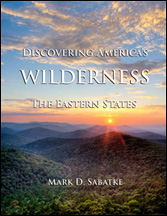
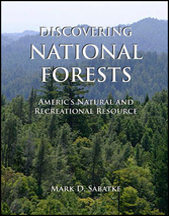
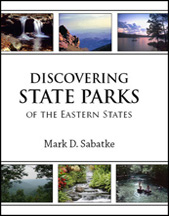
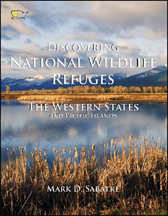
SAMPLE PAGES
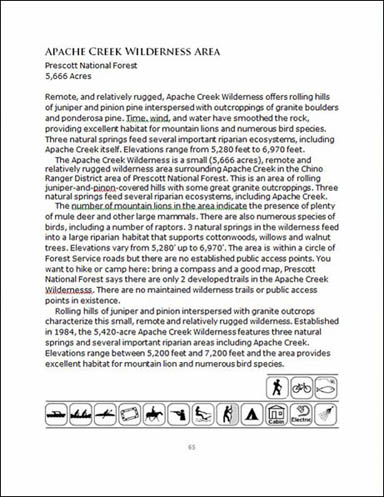
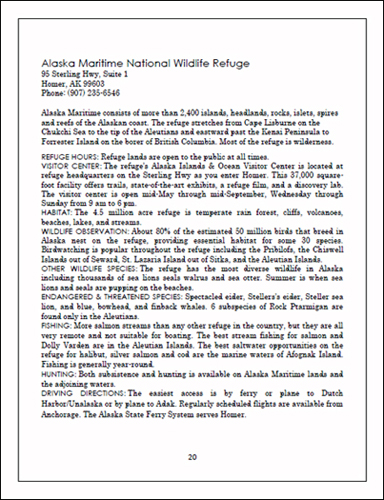
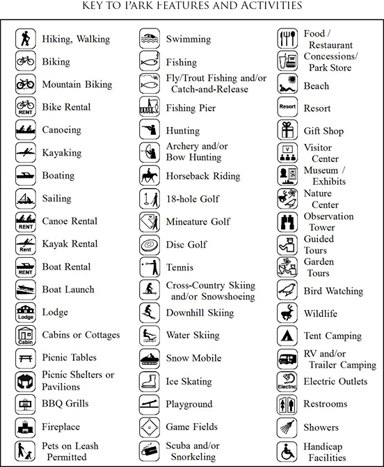
|
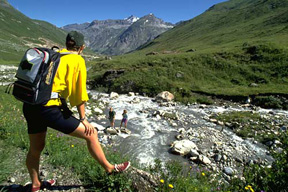


 50 Summit Avenue, Room 409
50 Summit Avenue, Room 409
 Hagerstown,
Maryland 21740
Hagerstown,
Maryland 21740  (301) 733-4363
(301) 733-4363










